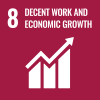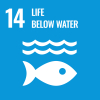This photo essay was originally published by Al Jazeera in October 2022.
Pir Bhakkar, Sindh – Fishing is the centre of Muhammad Kasim’s life. For generations, his family has fished near the Indus River. However, the recent floods in Pakistan have turned his village Pir Bhakkar into a swamp. His lifelong profession and source of income for his large family is now in jeopardy until waters recede and ecological balance is restored.
Unprecedented floods have impacted the livelihoods of millions of people across Pakistan, destroying crops and livestock, including fish, two primary sources of income for rural households. The key source of income for many people in Sindh, the USD 650 million fishing industry faces an uncertain future. The extreme rainfall that created these floods may very well be the new normal as climate change super-charges weather patterns.
Rural fishermen like Kasim do not have it easy. The lakes and ponds are often “owned” by landlords, who require local fishermen to pay a fee to catch fish. Other landlords pay fishermen a daily wage to catch fish which they keep and sell themselves.
Kasim lives within a 10-kilometre radius of a pond and three canals and is 20 kilometres away from the River Indus. When the floods hit his village, locals eager to catch fish without paying landlords set up fishing nets in the flooded areas. However, their efforts were in vain as fish from ponds, lakes, and rivers quickly spilled over the nets and disappeared in the floods.
Income from fishing heavily depends on the season. As the floods struck during peak fishing season, local fishermen will have to seek other options to put food on the table this year.
Monsoon season in rural Pakistan is typically welcomed with joy but this time many fear the next rains. They are suffering from what could best be described as “climate anxiety” – a term that hasn’t been translated into Sindhi yet.
Kasim worries his son will be forced to abandon the family’s long tradition as fishermen.
Management of resources and environmental degradation, amidst climate change, present further challenges. Decades of overfishing in the Indus River has depleted fish stock, causing the Government of Punjab to introduce a ten-year ban on commercial fishing on the Indus River earlier this year (in reference to 2022). Despite this, illegal fishing continues. Last week (in reference to September 2022), the Government of Pakistan launched the “Living Indus” initiative to restore the river’s ecosystem, so the Indus basin can become resilient to climate change.

Kasim’s son Babar stands in the debris of their destroyed home whose backyard is still flooded. Water-borne diseases, such as diarrhea, malaria and gastroenteritis in flooded areas are a grave concern. Photo: IOM/Usman Ghani, 16 September 2022

Kasim’s wife, Zeenat Bibi, stands in front of her damaged home. She and her family set up a temporary shelter using tarp and sticks taken from trees nearby, as their house is unsafe. Their neighbour’s surviving livestock stands in the left corner of their courtyard. Photo: IOM/Usman Ghani, 16 September 2022

“I spent my entire life savings building this house so my children would have a roof over their heads. Now, it’s all gone. We can’t rebuild without assistance.” Kasim is not alone in this predicament – the floods have damaged or destroyed over 2 million homes across the country. Photo: IOM/Usman Ghani, 16 September 2022

“My youngest son is constantly sick. We are using local remedies to treat him as there are no health facilities near us,” said Zeenat Bibi, holding her four-year-old son, Hussain. “We have been lucky otherwise. Some of our neighbours were bitten by snakes.” Photo: IOM/Usman Ghani, 16 September 2022

Other members of Kasim and Bibi’s community in Pir Bhakkar seek shelter next to elevated railway tracks. Until recently, the family lived in a makeshift shelter there. When water levels began to slightly recede, they moved their shelter to the front yard of their home. Photo: IOM/Usman Ghani, 16 September 2022

A young girl carries her family's supply of drinking water on her head. When disasters like this occur, the burden of labour on women and girls increases tremendously. Photo: IOM/Usman Ghani, 16 September 2022

All that remains of Pir Bhakkar community leader Abdul Wahid’s belongings are stored in this trunk. “We have seen some tough times, but this is unprecedented. Who knows what the next floods will bring?” Photo: IOM/Usman Ghani, 16 September 2022

A shepherd herds cattle along an elevated railway track. In this rural area, fishery and livestock are the main sources of income. In addition to the loss of fisheries, over 1.2 million livestock have been lost during the floods. Photo: IOM/Usman Ghani, 16 September 2022

Owners of livestock are struggling to keep their animals safe after the destruction of animal shelters. The cattle are at risk of starvation as the floods have wiped out the fodder supply. For many, the livestock they managed to save from the flooded areas during the evacuation is their only remaining source of income. Photo: IOM/Usman Ghani, 16 September 2022

“Gone are the days when our kids used to run freely in these fields,” said Kasim. The surrounding area is still inundated. It could take months before the water completely disappears. Photo: IOM/Usman Ghani, 16 September 2022

The local school Babar and other children in the community attended is now surrounded by dirty water and has been shut indefinitely. The future of many young children has been put on hold. Photo: IOM/Usman Ghani, 16 September 2022

Flood-affected areas cut off from the power grid have no reliable supply of electricity. Solar panels are seen in some areas. The absence of carbon-emitting vehicles reminds us that those contributing the least to climate change are impacted the most. Photo: IOM/Usman Ghani, 16 September 2022

The elderly in the community are worried about the future of the next generations. They worry their children and grandchildren may not be able to take up the traditional profession. Photo: IOM/Usman Ghani, 16 September 2022
Text by Maha Akbar, IOM Pakistan. Photos by Usman Ghani.



